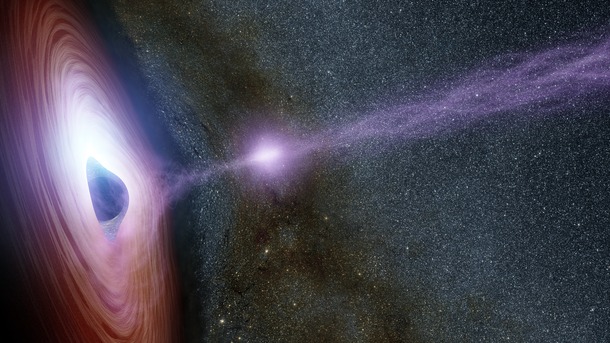
A supermassive black hole is depicted in this artist's concept, surrounded by a swirling disk of material falling into it. The purplish ball of light above the black hole, a feature called the corona, contains highly energetic particles that generate X-ray light. If you could really view the corona, it would be nearly invisible since we can't see its X-ray light.
The upper left side of the disk appears brighter than the lower right side due to an effect called relativist boosting. The material swirling around the disk is traveling at up to half the speed of light, and when it comes toward us, light from the disk is boosted, or, brightened. The opposite effect, a dimming of the light, occurs on the other side of the disk moving away from us.
Another form of relativistic boosting happens when the corona shoots away from the black hole, and later collapses. Its X-ray light is also brightened as the corona travels toward us at very fast speeds, leading to X-ray flares.
The immense gravity of the black hole warps the appearance of the disk and stars behind it.
In 2014, NASA's Nuclear Spectroscopic Telescope Array, or NuSTAR, and Swift space telescopes witnessed an X-flare from the supermassive black hole in a distant galaxy called Markarian 335. The observations allowed astronomers to link a shifting corona to an X-ray flare for the first time.